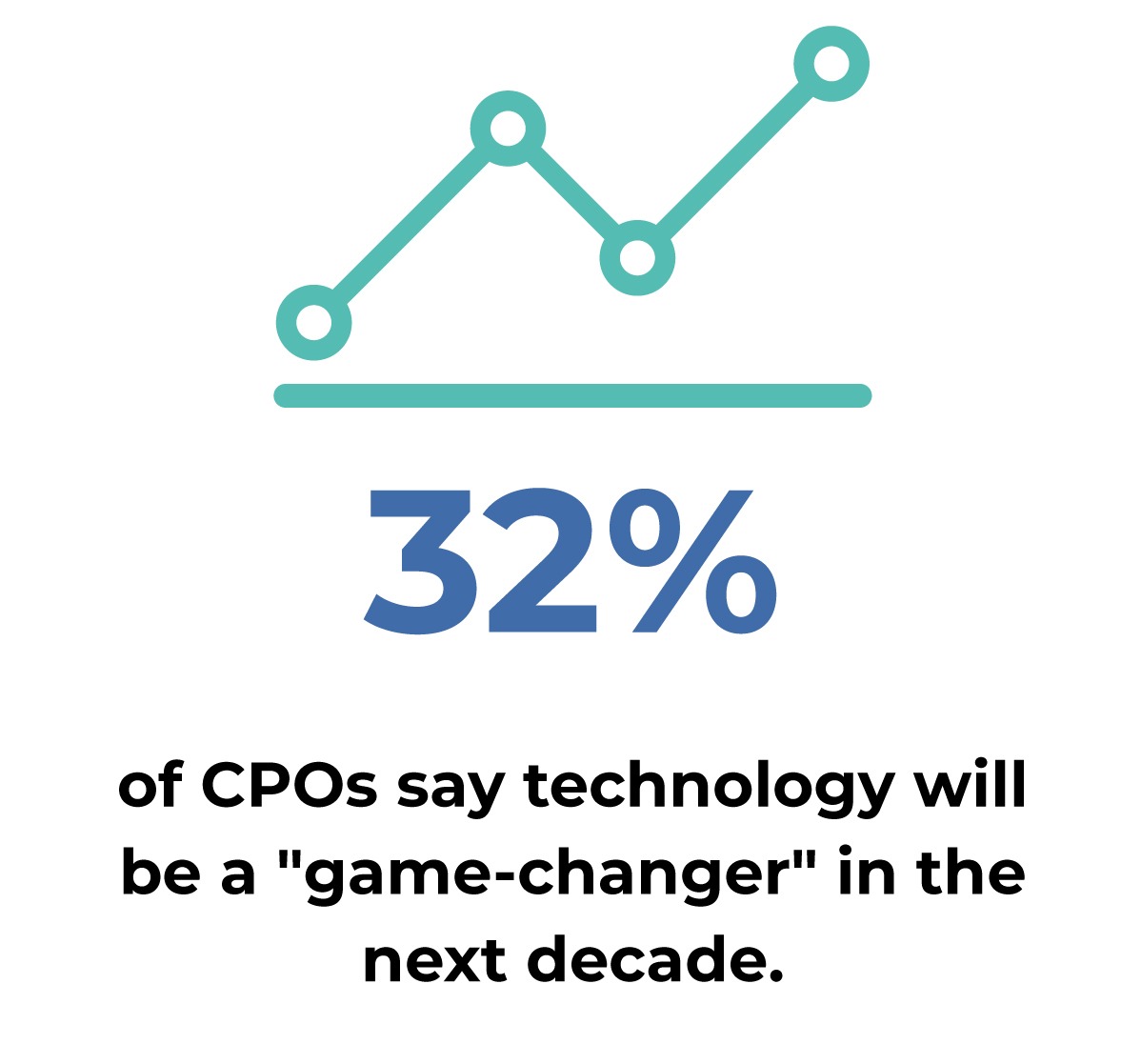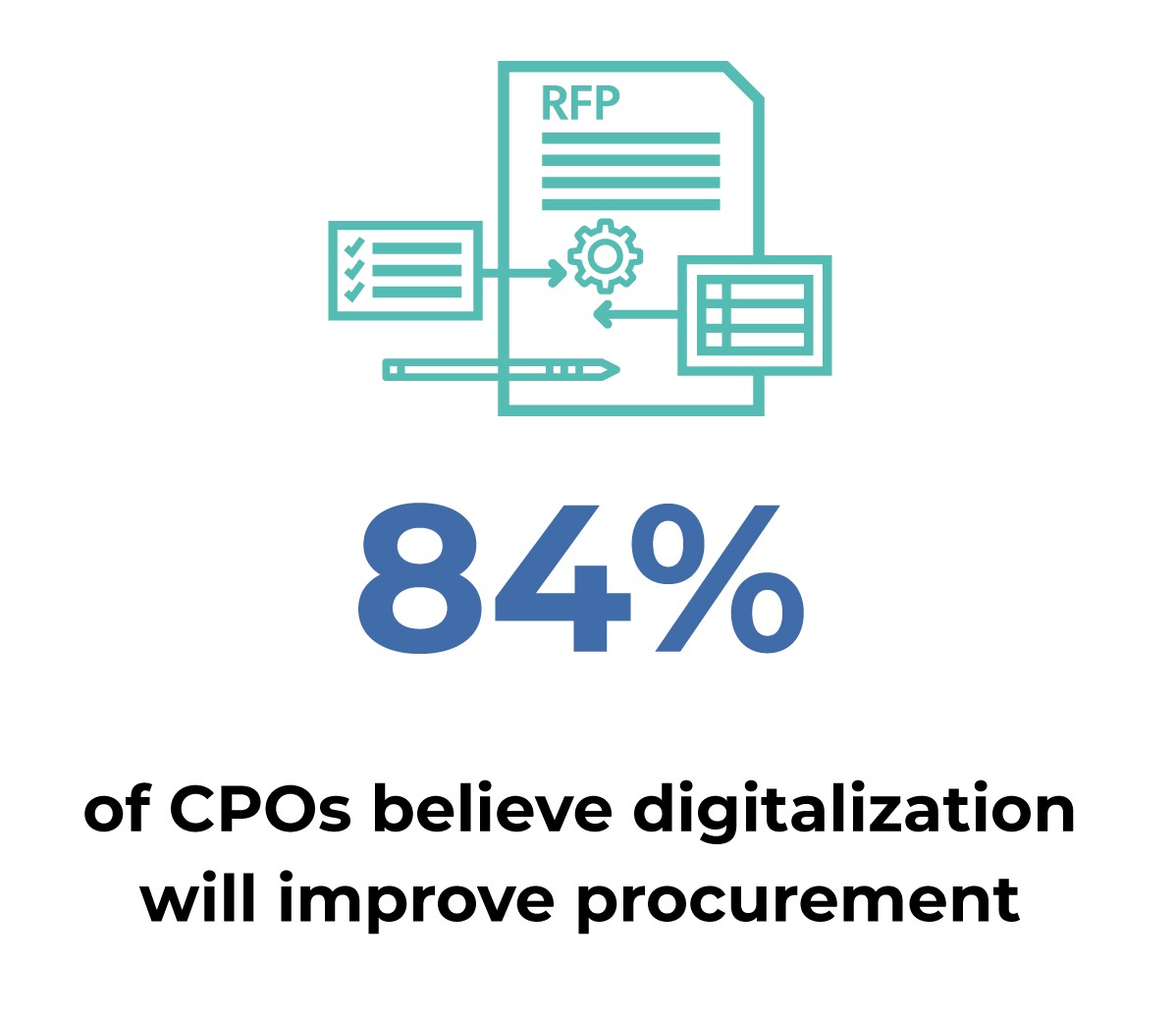There’s no gentle way to put it: the request for proposal (RFP) process is broken. A quick Google search reveals a sentiment of dissatisfaction surrounding the humble RFP. Indeed, the frustration comes from procurement and proposal teams alike. This consensus prompted us to ask: Why and what does the future of RFPs look like?
Naturally, the answers to these questions depend on who you ask. Certainly, some believe there’s no fixing the RFP and it would be best if we left it behind. However, others (like me) believe that the process can evolve to create a better experience for everyone. Regardless of where you stand, I’m sure we can all agree that it’s time for a change.
This blog post explores challenges in RFP management. In addition, it offers three predictions for how the future of RFPs will evolve as well as advice for how businesses can prepare. Finally, we’ll offer our perspective on RFP management.
- The problem with RFPs
- The future of RFPs
- Three predictions for the evolution of the RFP
- A big-picture perspective
Download the Future of RFPs ebook to explore advice from industry experts.
The problem with RFPs
There is little love for the RFP from either side of the process. Both procurement teams that issue RFPs and the proposal teams that respond to them have a long list of frustrations. For many, what was once a useful tool for gathering information, has become a costly burden.
As the Content Here blog put it when discussing the efficacy of RFPs, “Many participants cited frustration with an RFP process that wastes people’s time with unnecessary formality and the pretension of an even contest.”
Challenges for procurement teams issuing RFPs
- Gathering accurate business requirements
- Customizing the RFP questions and providing context
- Managing vendor communications
- Providing transparency to all vendor participants
- Narrowing down to best-fit vendors for each RFP
- Enticing vendors to participate
- Evaluating and scoring proposals manually
- Managing and tracking ongoing vendor updates
Challenges for proposal teams
- Meeting tight deadlines for lengthy RFPs
- Collaborating with subject matter experts
- Interpreting dated or unclear objectives outlined in the RFP
- Communicating value in a rigidly structured proposal
- Unknowingly responding to unwinnable RFPs
- Tracking down answers to previously asked questions
How challenges impact the RFP lifecycle
Each of these challenges throttles the effectiveness and efficiency of the RFP process. Predictably, a problem in one of these areas impacts another and so on. The procurement department is under pressure to deliver quick results and cost savings, so they use a template to issue an RFP. Then, vendors read the RFP and aren’t sure how best to answer, so they ask questions. Or worse, they don’t seek clarification and instead spend time answering irrelevant questions, only to find out later they weren’t a fit. And on it goes throughout the process, until everyone is frustrated and exhausted.
One of the biggest challenges is that many businesses still manage most of the RFP process manually. Accordingly, a survey by Ardent Partners of Chief Procurement Officers reported that 32 percent of CPOs believe that technology will be a game-changer, propelling them into the future.

But for now, the struggle persists. From creating the RFP using a template to copying and pasting answers into a proposal, manual steps waste precious time and lead to inconsistency and confusion. This has caused some businesses to give up on RFPs all together, rather than finding creative ways to improve it.
I believe that’s short sighted. Despite the challenges, RFPs still provide value to businesses who issue and respond to them. The process simply needs to evolve to take into account the entire RFP lifecycle. If we set out to fix the process, we have to start at the beginning. To start, we must find the underlying challenges and take the perspectives of both issuers and respondents into account.
The future of RFPs
Generally, there are three main causes behind the challenges faced by professionals who use or respond to RFPs. These underlying problems include a reliance on manual processes, an overuse of the RFP and a lack of clear communication. I think the future of RFPs will be different.
3 predictions for the RFP evolution
How RFPs are issued and answered will evolve
It seems obvious to anyone paying attention that the future of RFPs will rely heavily on technology. Digital transformation is here and it’s already changing the world, and RFPs are no exception. In fact, according to one study by ISG, advances in the last 10 years cut the time required from RFP to contract signing in half, from 12 months down to six. Accordingly, we’re seeing a major shift away from hard-copy submissions. Many businesses and industries have embraced the savings of going entirely digital. However, some industries are slow to change and still require traditional postmarked proposals (we’re looking at you public sector).
Technology as a tool for RFP management
We have so many tools at our disposal to help modernize and automate RFP management. Understandably, just as businesses are using communication and sales technology, they’re also adopting software solutions to improve RFP management. For example, businesses can improve the process with dynamic RFx templates, automated proposal scoring, centralized knowledge libraries and instant response selection powered by AI and machine learning.
Procurement tends to lead the charge in technology adoption. Followed closely by proposal teams looking for knowledge library tools and proposal-specific software. A survey of chief procurement officers reveals this trend reporting that 84 percent of respondents believe digitalization will improve procurement performance.

While any technology that empowers RFP automation is a step in the right direction, some stand-alone solutions fail to see the bigger picture. A strategic sourcing- or proposal-only tool lacks a holistic perspective that empowers true change. It may solve the symptoms of inefficiency, but the root problem still persists.
Without a centralized place where buyers and sellers can connect, transparency and visibility will continue to be a challenge. A complete platform, built for both RFP issuers and respondents improves the entire process. After all, better RFPs lead to better proposals, which lead to better partnerships — reducing costs and inefficiency for everyone.
RFPs will become more targeted, transparent and strategic
The defining detail of RFPs is purposeful. Certainly, for strategic sourcing projects, it works well. However, it’s not a one-size-fits-all process. An article from the Dendro Group laments the RFP’s overuse saying:
“An RFP is a crutch. Many organizations simply don’t know how else to find what they are looking for. An RFP is used to compile a broad scope of work (usually developed by committee) that rarely defines a clear strategic purpose behind it. This inevitably dilutes the rationale for hiring an agency. The RFP becomes a list of conflicting tasks, services, and tactical deliverables.”
Over reliance on the RFP process in procurement can cause misunderstandings between buyers and vendors. Luckily, using the right tool can instantly communicate expectations and improve transparency. When incorporated into the procurement process, vendor profiles, RFIs and RFQs can help achieve better results for everyone. When used together, the combination can significantly shorten the process and empower businesses to make better decisions. Using these tools to gather information enables RFPs that are brief, clear and to the point. Certainly, shorter, fewer and more strategic RFPs is a future we’d like to be a part of.
Explore this RFI, RFP or RFQ selection guide to learn more about how these tools work together.
Collaboration will be the backbone of the RFP process
We are more connected to information than ever. Likewise, the future of RFPs will make buyers and sellers more connected as well.
These days, buyers come into the procurement process with a ton of information from their own research. Similarly, suppliers can independently build a capture plan to tailor their offering to a potential customer. However, all of that work and research is wasted if the two can’t communicate clearly, quickly and effectively.
Unfortunately, there’s often a communication gap that is difficult to overcome. Managing RFPs manually through email creates a high risk of miscommunication and inconsistency between vendors. It also is so time consuming that it makes providing detailed individual feedback nearly impossible.
RFP issuers want better answers. Similarly, suppliers want more feedback about their responses. And, everyone wants to have enough information to be successful. This is what strategic sourcing is all about — creating a lasting relationship between customers and vendors. To accomplish that and enjoy the benefits of longer partnerships and fewer RFPs, the process must become more collaborative and transparent. And it’s coming.
The new RFP: Request for partner
When we discuss the need for better buyer and seller collaboration, it may start with a new kind of RFP. The request for partnership methodology, also known as collaborative bidding, encourages buyers and vendors to work together toward an ideal solution, rather than meeting a predefined set of qualifications. A white paper by The University of Tennessee, Knoxville defines this new kind of RFP:
“Request for partner is a term coined by University of Tennessee researchers to describe a highly collaborative competitive bidding process used for strategic and complex sourcing initiatives … A key goal is to identify a supplier that is innovative and able to provide transformation through outsourcing, and also is a good “fit” for their organization. For this reason the competitive bid process is very transparent and encourages collaboration – all the way from developing requirements through contract development and established governance mechanisms the parties will use post contract signing. The highly collaborative methodology allows the buyer and supplier to not only develop the “solution” during the bidding process, but also to establish a working knowledge of how well the organizations work together.”
While not every business may be ready to workshop procurement with their potential vendors, the idea is promising. Certainly this collaborative mindset will be a big part of the future of RFPs.
A big-picture perspective
As a full-circle, integrated RFP management software, not only do we believe that an evolution of the RFP is coming, but we’re committed to being a part of it. Ultimately, our mission is to design, develop and deliver software solutions that transform how organizations request information, respond to requests and connect.
We can’t do that by only addressing the needs of procurement or proposal professionals. And that’s why we’re dedicated to delivering a platform that improves the process for everyone. After all, in the future of RFPs that we envision, collaboration between procurement and proposal professionals isn’t just a nice idea, it is essential.



